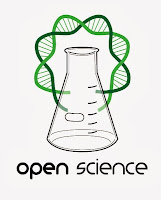 |
| Michelle Willmers |
A former journal publishing manager, Michelle Willmers was drawn to the Open Access movement after witnessing international publishers sweep into South Africa and acquire local journals. They then locked these journals behind paywalls and sought to sell them to local academic institutions at prices most simply could not afford.
For the South
African academic community this was a case of bad to worse: Historically South
African research has not been published over much in international journals. As
such, it has tended to be invisible to the global research community. Now it
was in danger of becoming invisible to local researchers as well.
Explaining her
journey to OA Willmers says, “It was perhaps less of a case of becoming an OA
advocate than having a deep realisation that the local scholarly communication
paradigm was broken. The conversation around how to first acknowledge and then
address this led in the open access direction.”
It was this same broken
local context that led to the creation (in 1997) of the South Africa-based
service African Journals Online (AJOL) — which Dominique Babini referred to in an earlier Q&A in this series. A local web portal that
enables African journals to make their content available online (and so visible
on a global basis without the need to cede ownership to international
publishers), AJOL currently hosts content from 462 African journals, 150 of which
are OA.
And it is this local
context that saw the recent launch of SciELO-SA, a South African version of SciELO (Scientific Electronic Library Online), the online open-access publishing
platform pioneered in Brazil. SciELO-SA was launched with the
content of 26 “free to access and free to publish” South African journals, and
it is expected that the service will eventually include around 180 of the
country’s 300 journals.



